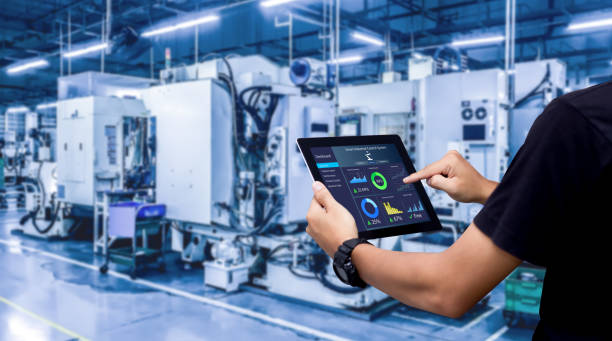Modular Factories: Adaptable Production for Dynamic Markets
In an era of rapid market shifts and evolving consumer demands, traditional manufacturing facilities often struggle to keep pace. Enter the concept of modular factories - a revolutionary approach that's reshaping industrial landscapes and redefining operational agility. This innovative model offers businesses unprecedented flexibility, scalability, and efficiency in production processes.

The Genesis of Modular Manufacturing
The concept of modular manufacturing isn’t entirely new. Its roots can be traced back to the mid-20th century when modular construction techniques began gaining traction in the building industry. However, it’s only in recent years that this approach has been successfully adapted to full-scale industrial production.
The driving force behind this shift has been the increasing volatility of global markets and the need for manufacturers to respond swiftly to changing demands. Traditional factories, with their fixed layouts and specialized equipment, often lack the flexibility to pivot quickly. Modular factories, on the other hand, are designed from the ground up to be adaptable.
Core Components of Modular Factories
At the heart of modular factories are standardized, self-contained units that can be easily reconfigured or replaced. These modules typically include:
-
Production Units: Flexible manufacturing cells that can be quickly repurposed for different product lines.
-
Utility Modules: Standardized units for power, water, and other utilities that can be easily connected or disconnected.
-
Material Handling Systems: Modular conveyor systems and automated guided vehicles (AGVs) that can be reconfigured as needed.
-
Control Systems: Centralized or distributed control systems that can be quickly reprogrammed to manage different production scenarios.
Advantages of Modular Factory Design
The modular approach offers several significant advantages over traditional factory designs:
-
Rapid Deployment: Modular factories can be set up much faster than conventional facilities, allowing companies to respond quickly to market opportunities.
-
Scalability: Production capacity can be easily increased or decreased by adding or removing modules.
-
Flexibility: The ability to reconfigure the factory layout allows for quick adaptation to new product lines or manufacturing processes.
-
Cost-Efficiency: Standardization of components and the ability to reuse modules can lead to significant cost savings over time.
-
Sustainability: Modular designs often result in reduced waste and energy consumption, aligning with growing environmental concerns.
Challenges in Implementing Modular Factories
While the benefits are compelling, transitioning to a modular factory model is not without challenges:
-
Initial Investment: The upfront costs of designing and implementing a modular system can be substantial.
-
Standardization Hurdles: Developing standardized modules that can accommodate a wide range of production needs is complex and requires careful planning.
-
Workforce Adaptation: Employees need to be trained to work in a more dynamic environment, which may require new skills and mindsets.
-
Integration with Existing Systems: For companies transitioning from traditional setups, integrating modular components with legacy systems can be challenging.
Real-World Applications and Success Stories
Several industries have begun embracing the modular factory concept with impressive results:
-
Automotive Manufacturing: A leading car manufacturer implemented a modular assembly line that reduced model changeover time by 50% and increased production flexibility by 30%.
-
Pharmaceutical Production: A global pharmaceutical company adopted modular clean rooms, enabling rapid scaling of vaccine production during the COVID-19 pandemic.
-
Consumer Electronics: A major electronics manufacturer used modular production units to quickly set up and dismantle seasonal production lines for holiday-specific products.
-
Food and Beverage: A beverage company implemented modular bottling lines, allowing for quick changes between different product sizes and types, reducing downtime by 40%.
Key Strategies for Modular Factory Implementation
-
Start with a pilot project to test the concept and gain buy-in from stakeholders
-
Invest in comprehensive training programs for employees at all levels
-
Develop a robust standardization framework for modules and interfaces
-
Implement advanced data analytics and IoT technologies for real-time monitoring and optimization
-
Foster a culture of continuous improvement and adaptability within the organization
-
Collaborate with suppliers and partners to ensure compatibility and seamless integration of modular components
-
Regularly reassess and update the modular strategy to align with evolving market needs and technological advancements
As industries continue to face unprecedented challenges and opportunities, the modular factory concept offers a promising path forward. By embracing this flexible and adaptive approach, manufacturers can position themselves to thrive in an increasingly dynamic and competitive global marketplace. The future of manufacturing lies not in rigid, immovable structures, but in agile, reconfigurable systems that can evolve as quickly as the markets they serve.





